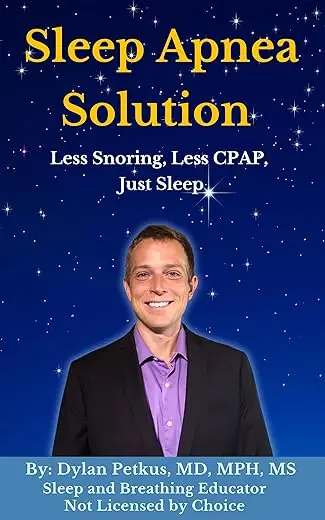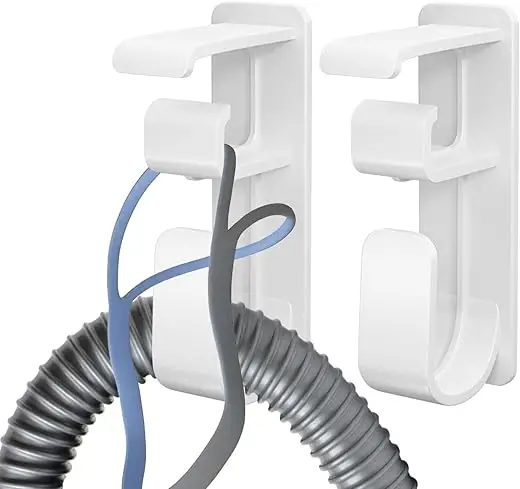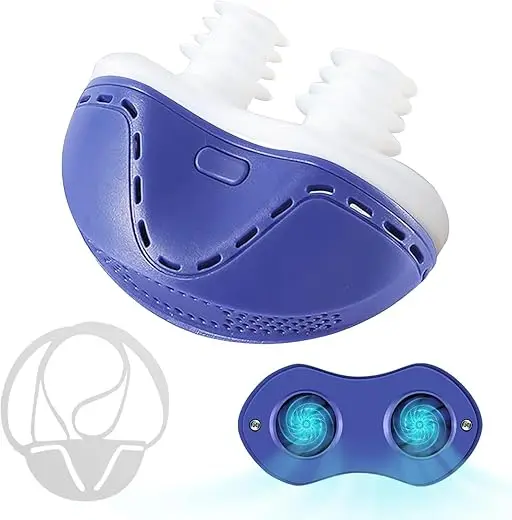Understanding Sleep Apnea Machines
Imagine waking up every day feeling exhausted, despite a full night’s sleep. This is a reality for many suffering from SLEEP APNEA, a condition characterized by interrupted breathing during sleep. Sleep apnea can lead to serious health issues, including heart disease, depression, and impaired cognitive function.
Enter the SLEEP APNEA MACHINE. These devices are designed to help individuals breathe more easily at night, ensuring they receive the restorative rest their bodies crave. But how do these machines work, and what options are available?
In this article, we will explore the various TYPES of sleep apnea machines, their numerous BENEFITS, and important CONSIDERATIONS for users. By understanding these elements, you can take significant steps towards better sleep and a healthier life. Join us as we delve deeper into the world of sleep apnea and its effective treatments.




What is Sleep Apnea?
Sleep apnea is a chronic condition that affects millions globally, often going unnoticed and untreated. It is characterized by repeated interruptions in breathing during sleep, leading to fragmented and poor-quality rest. The two primary types of sleep apnea are obstructive sleep apnea (OSA) and central sleep apnea (CSA).
Obstructive Sleep Apnea (OSA)
OSA, the most common form, occurs when the throat muscles relax excessively during sleep, obstructing the airway. This can manifest as loud snoring and gasping for air, prompting the individual to suddenly wake up, sometimes dozens of times a night. OSA can affect anyone but is more prevalent among overweight individuals and those with certain anatomical features, such as a thick neck or enlarged tonsils.
Central Sleep Apnea (CSA)
In contrast, CSA results from a failure of the brain to send the proper signals to the muscles that control breathing. This type is less common and often linked to underlying medical conditions such as heart failure or a stroke. Individuals with CSA may not exhibit the snoring commonly associated with OSA but will still experience significant sleep disruptions and related symptoms.
Symptoms and Prevalence
Common symptoms of sleep apnea include excessive daytime sleepiness, irritability, difficulty concentrating, and morning headaches. The condition not only disrupts sleep but can also lead to severe health repercussions, including cardiovascular issues, diabetes, and increased risk of accidents due to daytime drowsiness.
Studies estimate that around 22 million Americans experience sleep apnea, with many remaining undiagnosed. The importance of recognizing the condition cannot be overstated; early diagnosis and treatment can significantly improve quality of life and prevent severe health risks.
Managing Sleep Apnea
For those who suspect they may have sleep apnea, seeking medical advice is crucial. A healthcare professional may conduct sleep studies to diagnose the disorder accurately. Treatment often involves lifestyle changes, weight management, or the introduction of a sleep apnea machine, which serves as a vital tool in managing the condition effectively.
Understanding the nuances of sleep apnea is essential for anyone affected or who suspects they might be. As we explore how sleep apnea machines function in the next section, their critical role in alleviating symptoms and enhancing sleep quality will become increasingly clear.
How Sleep Apnea Machines Work
When it comes to combating sleep apnea, sleep apnea machines, particularly Continuous Positive Airway Pressure (CPAP) machines, play a vital role. These devices are designed to maintain an open airway during sleep, allowing for uninterrupted breathing. But how exactly do they work? Let’s break down the mechanics.
The Basic Functionality of CPAP Machines
At its core, a CPAP machine consists of a motor, a hose, and a mask. Here’s how it all comes together:
- Airflow Generation:
- The motor draws in air from the room and delivers it through the hose to the mask.
- This air is pressurized to create a continuous flow that helps keep the airway open.
- Mask and Comfort:
- The mask, which can come in various styles (nasal, full face, etc.), fits snugly on the user’s face.
- A proper fit is essential to prevent air leaks, ensuring that the pressurized air effectively keeps the airway clear.
- Pressure Settings:
- CPAP machines usually feature adjustable pressure settings tailored to the user’s needs. These settings are determined based on a sleep study that identifies the appropriate level of airflow required to keep the airway open.
- Some machines even have auto-adjusting functions (Auto CPAP) that modify pressure throughout the night based on the user’s breathing patterns.
Additional Features
Modern CPAP machines often come equipped with several advanced features to enhance user comfort and compliance:
The integration of these features has made sleep apnea machines increasingly user-friendly, reducing obstacles that might hinder consistent use.
User Experience
The experience of using a sleep apnea machine can vary from person to person. Initially, it might take some time to adjust to sleeping with a mask. However, many users report significant improvements in their sleep quality, daytime energy levels, and overall well-being after consistent use.
As we venture into the next section, we will explore the different types of sleep apnea machines available and how they each cater to unique user needs, helping millions achieve a more restful night’s sleep.
Types of Sleep Apnea Machines
When it comes to sleep apnea treatment, there isn’t a one-size-fits-all solution. Various types of sleep apnea machines cater to different needs, so it’s crucial to understand what each device offers. Here’s a closer look at the most common types of sleep apnea machines: CPAP, BiPAP, and APAP.
Continuous Positive Airway Pressure (CPAP) Machines
CPAP machines are the most widely used devices for treating obstructive sleep apnea. They work by providing a steady stream of air to keep the airway open throughout the night.
Many users find immediate relief with CPAP machines, often reporting improved energy levels and mood after just one night of use.
Bilevel Positive Airway Pressure (BiPAP) Machines
BiPAP machines deliver two levels of air pressure: a higher pressure for inhalation and a lower pressure for exhalation. This variation can make breathing easier for users who struggle with the constant pressure of CPAP.
BiPAP machines are especially helpful for patients who might find CPAP overwhelming, as they experience a gentler, more natural breathing rhythm.
Automatic Positive Airway Pressure (APAP) Machines
APAP machines automatically adjust the air pressure throughout the night based on the user’s breathing patterns. This adaptiveness is particularly beneficial for individuals whose pressure needs may change during different sleep stages or body positions.
APAP machines offer a stealthy approach to treatment, as they seamlessly adapt to user needs, ensuring comfort and efficacy.
Choosing the Right Machine
The choice of which machine to use varies depending on the severity of the condition, comfort preferences, and specific medical needs. Consulting with a healthcare provider is imperative to determine the appropriate device, as they can recommend options and settings tailored to the individual’s circumstances.
With an understanding of the types of sleep apnea machines available, it’s essential to explore the myriad benefits these devices provide to users. In the upcoming section, we will delve into how these machines not only improve sleep quality but also enhance overall health and well-being.
Benefits of Using a Sleep Apnea Machine
The regular use of sleep apnea machines brings a multitude of benefits that extend far beyond merely improving sleep quality. For individuals struggling with sleep apnea, these devices are not just helpful aids; they represent a pathway to better overall health and a significantly enhanced quality of life.
Improved Sleep Quality
One of the most immediate benefits of using a sleep apnea machine, particularly a CPAP, is the improvement in sleep quality. Users often report experiencing deeper and more restorative sleep after beginning treatment. Instead of frequent awakenings due to breathing interruptions, many find uninterrupted nights, leading to a more refreshing and invigorating rest. Consider the story of Jake, a 45-year-old businessman who struggled with constant fatigue and morning headaches due to untreated OSA. After starting CPAP therapy, he experienced profound changes, waking up feeling energized and ready to tackle his day.
Enhanced Daytime Alertness
Better sleep naturally translates to improved daytime alertness and cognitive function. Many users report enhanced focus, reduced irritability, and better performance at work or in daily activities. For example, Sarah, a teacher, found herself struggling to stay awake during her afternoon classes before she began using a sleep apnea machine. Now, with better sleep quality, she is more engaged with her students and has even taken on extra responsibilities at her school.
Long-term Health Benefits
The potential health consequences of untreated sleep apnea can be severe, often leading to conditions like hypertension, diabetes, and cardiovascular disease. By effectively managing sleep apnea through the use of a sleep apnea machine, individuals can significantly lower their risk for these secondary health issues. Several studies have shown that consistent use of CPAP machines not only leads to improved sleep but also supports heart health and weight management.
Enhanced Quality of Life
The benefits of better sleep, increased alertness, and improved health converge to create a transformed quality of life. Adequate sleep boosts mood stability, nurtures social relationships, and promotes an active lifestyle. Patients often feel empowered and motivated to engage more fully in their personal and professional lives.
To make the most of these benefits, however, consistent use is key. Initial discomfort with wearing a mask is a common hurdle, but many users learn to embrace it over time.
As we continue, we will delve into important considerations and tips for users of sleep apnea machines, ensuring that they can navigate their journey with ease and confidence.
Considerations and Tips for Users
Navigating the world of sleep apnea machines can seem overwhelming initially, but with the right guidance, users can effectively enhance their treatment experience. Here are some key considerations and practical tips to help users make the most of their sleep apnea machines.
Choosing the Right Machine
Finding the right device is crucial for effective treatment. Consult with your healthcare provider to evaluate your specific needs based on the type and severity of your sleep apnea. Here are important factors to consider:
For instance, the Compact REMSTAR Plus CPAP System is an excellent entry-level option for many OSA sufferers looking for a reliable and effective CPAP machine.
Maintenance Tips
Regular maintenance is essential for ensuring the longevity and effectiveness of your machine. Here are some key maintenance tips:
Common Troubleshooting Issues
Even with the best machines, users may encounter issues that can disrupt their experience. Here are a few common challenges and their solutions:
By understanding these tips and considerations, users can enhance their comfort and adherence to using sleep apnea machines. This knowledge not only empowers them in their treatment journey but also positions them for a healthier, more invigorating sleep experience.
As we wrap up our exploration, the importance of sleep apnea machines in health management cannot be overstated…
The Importance of Sleep Apnea Machines in Health Management
Sleep apnea machines play a vital role in managing this prevalent sleep disorder. By delivering continuous airflow, these devices help maintain open airways during sleep, significantly reducing the risks of associated health issues such as cardiovascular disease, daytime fatigue, and impaired cognitive function. The positive effects on overall sleep quality can lead to improved mood, productivity, and overall health.
If you suspect that you suffer from sleep apnea, seeking diagnosis and treatment is essential. With the right sleep apnea machine, you can reclaim restful nights and enhance your quality of life. Prioritize your sleep health today; your body and mind will thank you for it.






I was skeptical about the mini anti-snoring device, but I gave it a shot. It’s small and surprisingly effective! Anyone else use it?
Thanks for sharing your experience, Oliver! They’re definitely a good alternative for some.
I’ve been thinking about getting one! Glad to hear it works well for you!
How’s the comfort level? I’m worried it’ll be annoying to wear.
I just read about the FDA-cleared anti snoring mouthpiece. Do they actually work? I’ve tried so many things to stop snoring, and nothing seems effective. 😩
Mouthpieces can be hit or miss! Some people love them, others not so much. It might take a few tries to find the right one.
I’ve had success with mine! Just took a bit of adjusting to get it comfortable.
I’ve heard that the mouthpieces can be more effective if you have mild snoring issues rather than severe sleep apnea.
I recently started using a CPAP machine, and wow, it’s a game changer! 😴 I didn’t realize how much sleep I was missing out on until I started using it. The portable auto CPAP machine with humidifier seems like a great option for traveling. Anyone tried it? How does it hold up?
I have the portable one, and it works great! Just make sure to pack the humidifier part separately; it’s a bit bulky.
I’ve been eyeing that one too! What’s the noise like?
Glad to hear you’re finding relief, Sarah! The portable models are definitely convenient for travel. 😊
Sleep apnea machines seem so complicated. I’ve been avoiding it because I don’t want to look like a cyborg while I sleep! 😂 But I know I need to do something. How long did it take for you guys to get used to it?
Haha, I totally get that! It can feel a bit overwhelming at first, but you’ll adjust.
Honestly, it took me about a week. Now it feels weird to sleep without it!
I was the same way! But trust me, once you start feeling better, it’s worth it.
I’ve seen mixed reviews on CPAP machines. Some say they’re a must-have, while others claim they can be uncomfortable. What’s the verdict?
I had a rough start, but once I found the right mask, it changed everything.
I thought the same! Don’t give up! It can take time to find the right fit.
It really varies from person to person! Comfort can depend on the type of machine and mask.
I wanted to share my struggle with sleep apnea. I was diagnosed last year and it’s been a rollercoaster. The comprehensive guide for sleep apnea relief helped me understand what I’m dealing with. Anyone else find guides helpful?
Guides are lifesavers! They can make the whole process feel less intimidating.
I felt the same way! The more I read, the more empowered I felt.
Absolutely, Kyle! Understanding the condition is the first step to managing it.
Just a heads up for newcomers—make sure to read the section on tips for users! I learned a lot about how to set up my CPAP correctly. It made a huge difference for me! 🙌
Thanks for the tip, Jessica! It’s often the small adjustments that make the biggest difference.
Yes! I wish someone told me that sooner. It really helped my experience.